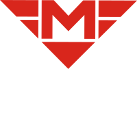Table of Contents
Metro
| Metro | |
|---|---|
 |
|
| founder: | Mrkva |
| depends on: | |
| interested: | |
| software license: | - |
| hardware license: | - |
Introduction
Prague metro is the only subway system in Czech Republic. With 1.5 million passengers transported each day, it plays the crucial role in the Prague mass transport system. It is an interesting piece of technology, however lots of facts about it are not publicly available.
Radio system
Prague metro uses VHF radio in 150-160MHz range. To increase coverage, at top of the tunnels are installed waveguide cables. There are also few radio repeaters in use, activated with CTCSS system.
Be aware that unauthorized receiving of traffic is a misdemeanour and under normal circumstances it is a felony to transmit on these frequencies without permit.
| Area | Downlink | Uplink | DL CTCSS | UL CTCSS | Callsigns |
|---|---|---|---|---|---|
| Line A | 156.525MHz | 152.025MHz | 162.2Hz | 82.5Hz | METRO1xx |
| Line B | 155.600MHz | 151.100MHz | 186.2Hz | 94.8Hz | METRO2xx |
| Line C | 156.675MHz | 152.175MHz | 71.9Hz | 71.9Hz | METRO3xx |
| Kacerov yard | 155.600MHz | ? | 218.1Hz | ? | METRO3x |
| Hostivar yard | 156.700MHz | ? | ? | ? | METRO1x |
*
- 151100
- 151175
- 152050
- 152200
- 152225
- 152250
- 152300
- 163900
- 168400
Frequencies lower than 155MHz are most likely repeater uplinks, frequencies higher than 160MHz most likely some digital traffic.
Callsigns are numbered in the following way:
- METRO?00 - traffic control
- METRO?70 - personnel control (engineer exchanges etc.)
- METRO?01 - METRO??? - trains
Callsigns lower than METRO100 are still unidentified, however are in use.
- METRO30 was heard on 155.6MHz on the surface, and is probably traffic control in Kacerov railway yard. CTCSS 218.1Hz is apparently used.
- Rough guess is METRO20 will be Zlicin and METRO10 Hostivar.
- During the accident on 2015-06-04 (train hit someone on line C, Kobylisy station), station METRO150 was heard on the standard Line C frequency, identified itself as a someone in charge of cleanup operations.
When train contacts traffic control, it first identifies itself with CCIR selcall in the format: 20xxx, where xxx are the numbers in the callsign. Selcall code is followed by dual tone 852Hz and 1477Hz (DTMF “9”). The control then calls the train. When control calls the train first, no selcall or DTMF is used. When train calls railway yard, it uses same CCIR, but it is followed by a single 1500Hz tone instead of DTMF.
There is also some voice traffic on 156.700MHz (I think I've heard callsign METRO23), captured on the surface. Further investigation is in progress.
Other frequencies
The company that operates Prague metro has more frequencies allocated, see CTU database. On line A on frequency used mostly on line C is are transmitted beeps, approx 0.5Hz. On 155.675MHz there is also some (not voice) communication, on lane A. Signal is sometimes heard in the area Dejvicka-Staromestska, in tunnel Starometska-Mustek quickly disappears (the antenna is probably separated into two parts).
Project suggestions: find how well are signals on publicly available frequencies spreading through the tunnels - could be possibly used for nice long range transmission. There are no regla * tions concerning using custom radio equipment in the metro. Frequencies that might work:
- 172.650MHz - 173.050MHz (shared frequencies, some even with 5W TX power allowed, ~20MHz above metro frequencies)
- 446.006250MHz - 446.093750MHz (PMR, only 500mW TX power allowed, close to 3rd harmonic of the metro frequencies)
- 448.490MHz - 449.810MHz (shared frequencies, some with 5W TX power allowed, close to 3d harmonic)
Metro regulations
There are many documents that regulate metro operation. We have managed to acquire some of them under Freedom of information act (law 106/1999). Sorry, documents are in Czech only. After a recent event that might, or might not be connected to publication of these documents, I've decided to make them available only from internal network (at least for a now). Documents are now at data.brm:/data/mirror/Metro
- C 1/1 Předpis pro svařování drážních vozidel na dráze speciální
- D 1/1 Návěstní předpis pro metro (3rd party site)
- D 2/1 Dopravní předpis pro metro (available)
- Ds 2/1 Dopravní směrnice pro metro (available)
- Ds 5/1 Směrnice pro vypracování staničních a provozních řádů dep
- D 6/1 Přepravní předpis pro metro (available)
- E 1/1 Předpis pro činnost elektrických zařízení
- Es 1/1 Směrnice pro činnost elektrických zařízení
- O 2/1 Kvalifikační a zkušební řád metra
- O 4/1 Mimořádné události v metru
- O 5/1 Předpis o bezpečnosti a ochraně zdraví při práci
- Os 3/1 Směrnice pro činnost cizích organizací ve vztahu k provozu metra
- S 1/1 Dopravní zařízení na dráze speciální
- T 1/1 Dopravní cesta metra
- T 2/1 Předpis pro defektoskopickou kontrolu kolejnic a klasifikaci vad
- V 1/1 Předpis pro strojvedoucí elektrických vozů (available)
- V 2/1 Předpis o brždění elektrických vozů
- V 3/1 Předpis pro údržbu a opravy elektrických vozů
- V 4/1 Činnost při závadách elektrických vozů
- V 5/1 Předpis o vozidlech pro služební vlaky
- V 6/1 Předpis o brždění vozidel pro služební vlaky
- Z 1/1 Předpis pro obsluhu zabezpečovacího zařízení
- Zs 1/1 Směrnice pro zabezpečovací zařízení
- Z 3/1 Vlakový zabezpečovač
D2/1 in printed form is also available in brmLibrary (together with CD with D6/1, Ds2/1, V1/1, V4/1), barcode 529. Here is Freedom of information request that can be used to obtain more documents (Czech only).
